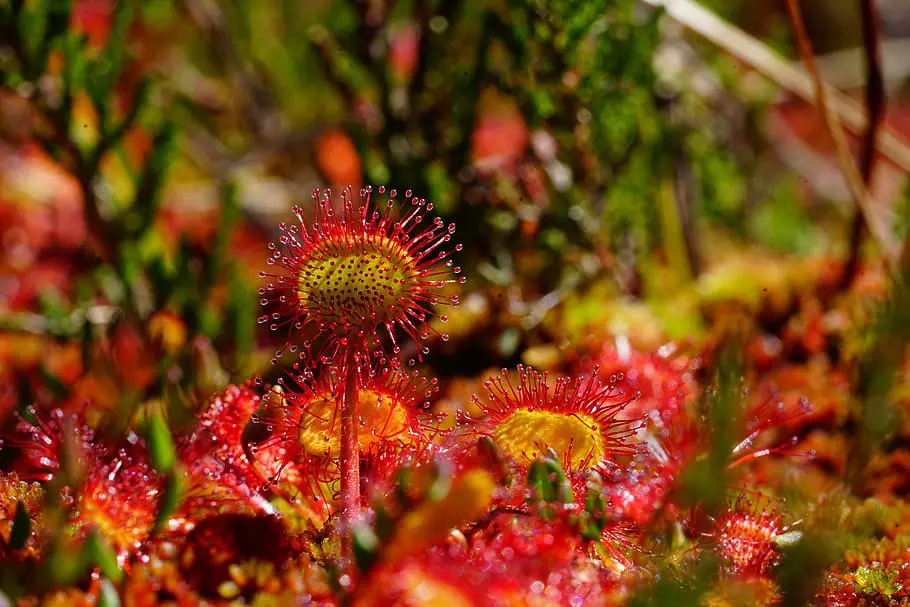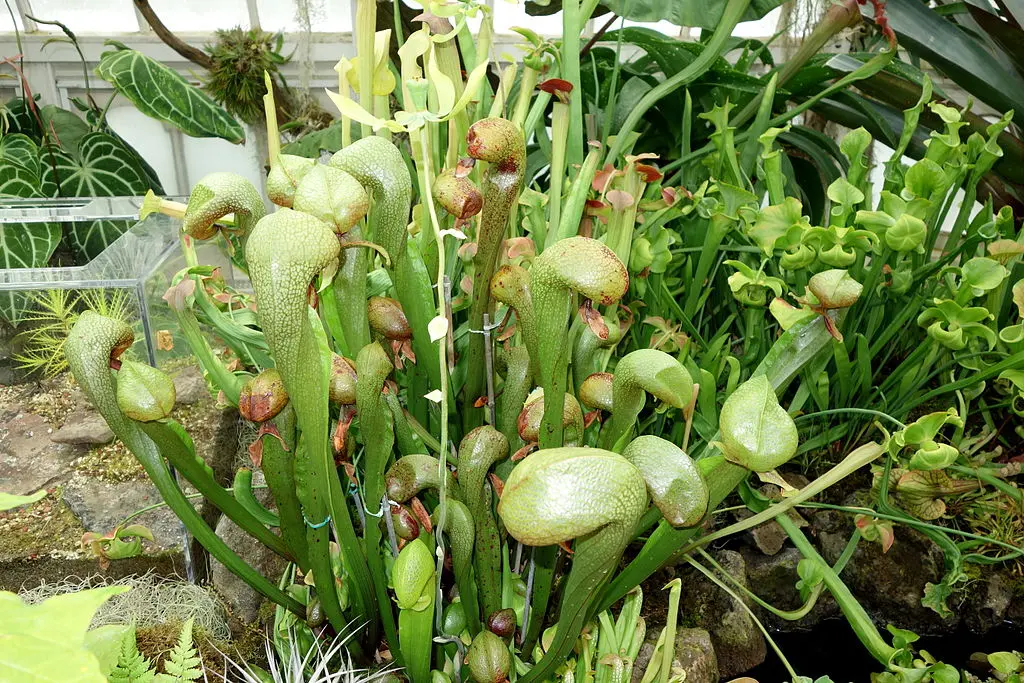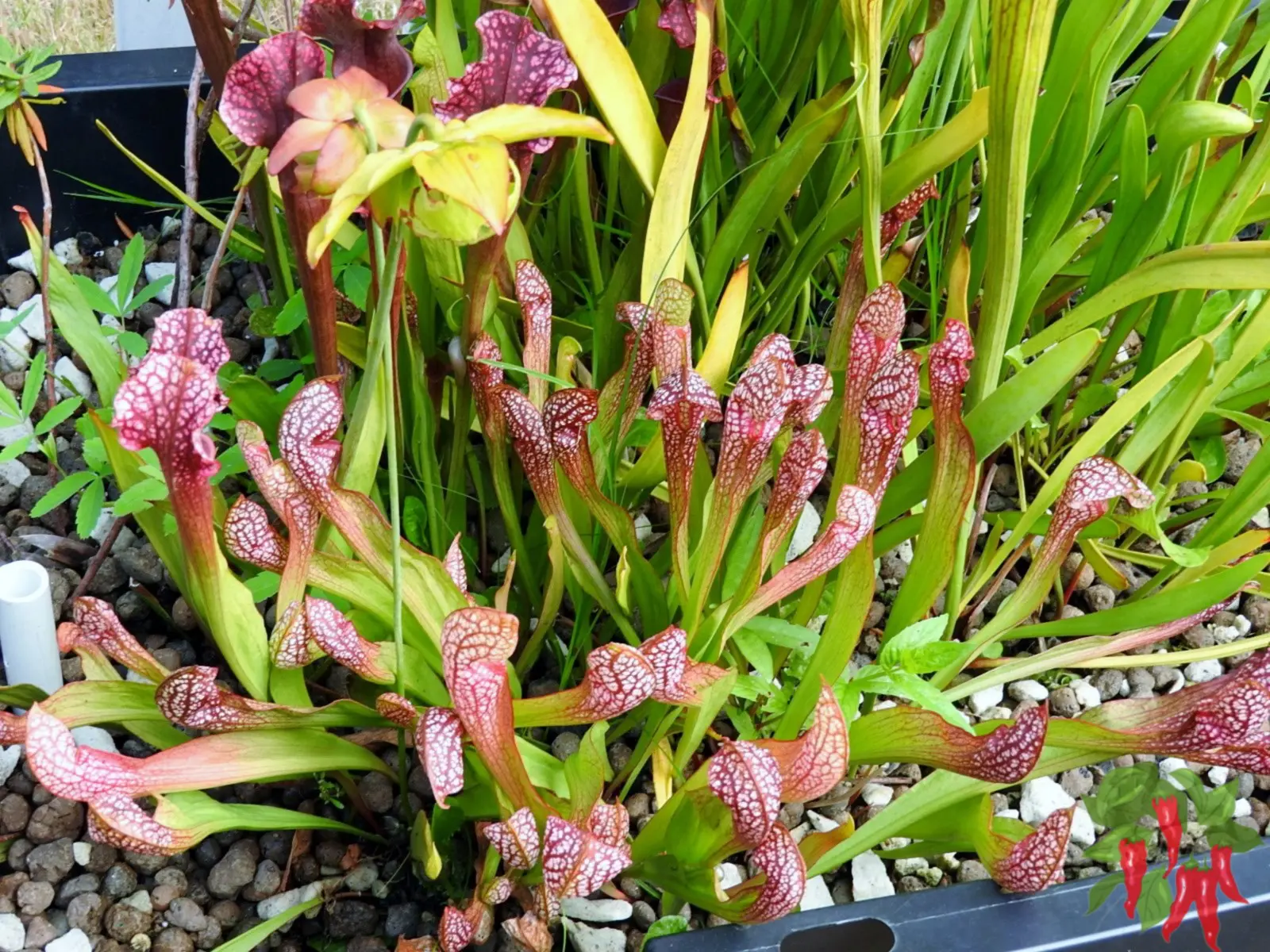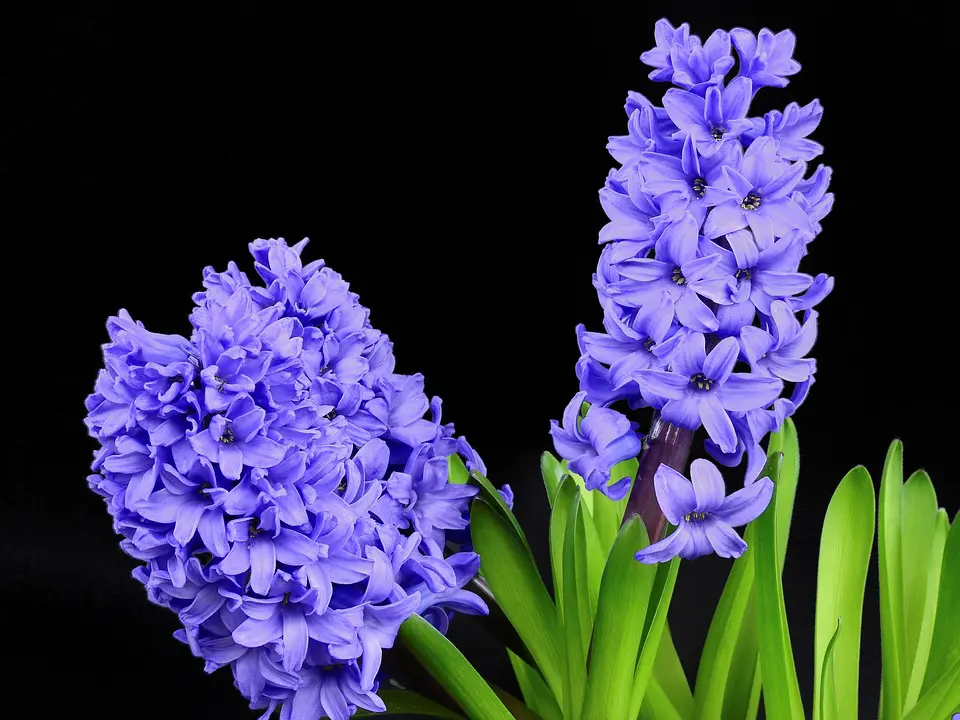This post contains affiliate links. If you buy something from one of our links we may earn a commission. Thanks
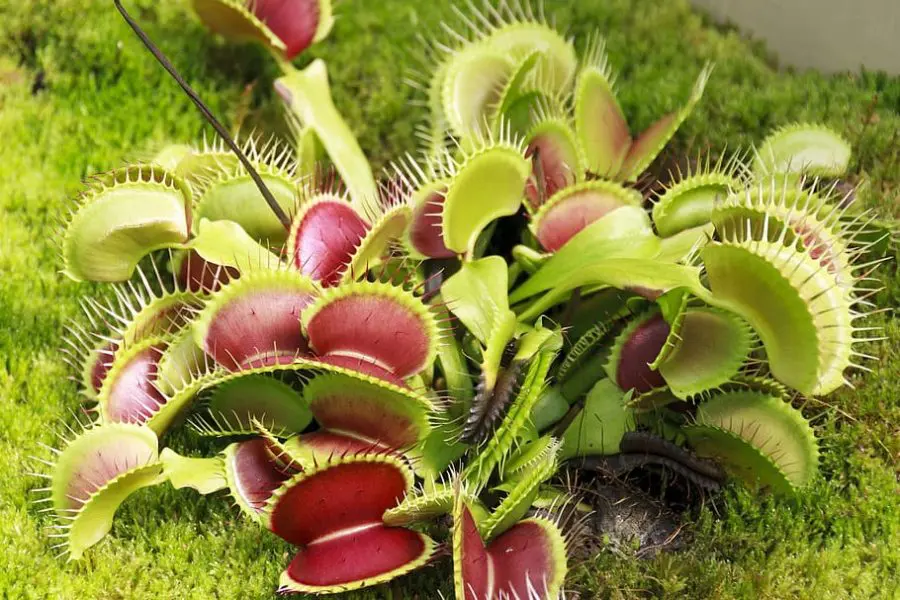
Discover the secrets of how to grow Venus Fly Trap! Dive into a world where nature’s wonders meet gardening in our friendly guide.
To grow Venus Fly Trap, provide it with acidic, nutrient-poor soil and ensure it gets plenty of sunlight. Always water with distilled or rainwater, and maintain high humidity. During winter, allow it to enter its dormancy period in cooler temperatures. Feed it small insects occasionally for optimal growth.
How to Grow Venus Fly Trap
Ever been captivated by the allure of carnivorous plants and wondered how to grow a Venus Fly Trap in your own space?
You’re in the right place! Join us on this green-fingered adventure as we unravel the mysteries of Venus Fy Trap care for this fascinating plant.
The Venus fly trap, known scientifically as Dionaea muscipula, is a marvel of the plant kingdom.
Originating from the wetlands of South Carolina and North Carolina, this carnivorous plant has a unique method of obtaining nutrients, making its care distinct from most other houseplants.
You can buy Venus Fly Trap plants and seeds on Amazon
Getting Started with Venus Flytrap
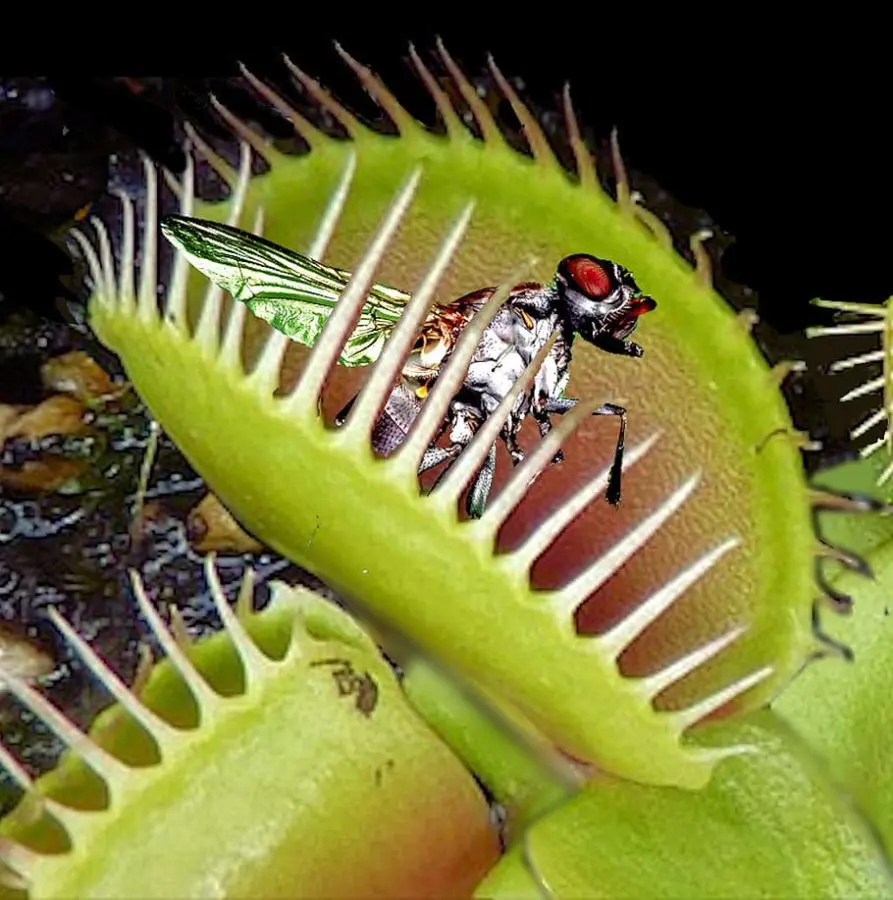
Before embarking on the journey of growing a Venus fly trap, it’s essential to understand its origins and basic needs.
As a native of specific regions in the US, it has particular requirements that, when met, can lead to a thriving plant.
The Venus flytrap (Dionaea muscipula) is a carnivorous plant native to subtropical wetlands on the East Coast of the United States in North Carolina and South Carolina. It catches its prey—chiefly insects and arachnids—with a trapping structure formed by the terminal portion of each of the plant’s leaves, which is triggered by tiny hairs (called “trigger hairs” or “sensitive hairs”) on their inner surfaces. From Wikipedia.
How to Grow Venus Fly Trap
Begin with understanding the plant’s native habitat. The Venus fly trap thrives in high-humidity environments with acidic soil.
Ensure you have the right growing medium. A mix of sphagnum moss and horticultural sand often works best.
Growing Venus Fly Trap from Seeds
It’s a longer process but allows you to witness the entire growth cycle. Seeds should be planted in early spring.
The germination process requires patience. Ensure the seeds remain in a high-humidity environment, mimicking their natural setting.
Propagating Venus Fly Trap
Propagating Venus flytraps allows you to multiply your collection and share these fascinating plants with others.
Here’s a step-by-step guide on how to propagate Venus flytraps:
How to Propagate Venus Fly Traps
Division of Rhizomes:
When to Do It: This method is best done during the plant’s dormancy period, typically in late winter or early spring.
Steps:
• Carefully remove the Venus flytrap from its pot.
• Gently separate the soil from the roots to expose the rhizome.
• Using a clean knife or scissors, divide the rhizome, ensuring each section has roots attached.
• Replant each division into a suitable carnivorous plant soil mix.
• Water with distilled or rainwater.
Leaf Cuttings:
When to Do It: Spring or early summer is the best time for this method.
Steps:
1. Choose a healthy, mature leaf from your Venus flytrap.
2. Cut the leaf close to the base.
3. Lay the leaf flat on the surface of a pot filled with a mix of sphagnum moss and sand or perlite.
4. Pin the leaf down using a bent paperclip or hairpin, ensuring the white base is in contact with the soil.
5. Place the pot in a plastic bag to maintain high humidity and keep it in a bright location but out of direct sunlight.
6. In a few weeks, small plantlets will emerge from the base of the leaf. Once they’ve grown a bit, they can be carefully separated and repotted.
Seed Propagation:
When to Do It: After the Venus flytrap has flowered and produced seeds.
Steps:
1. Collect seeds from mature Venus flytrap flowers.
2. Sprinkle the seeds on the surface of a pot filled with a carnivorous plant soil mix.
3. Gently press the seeds into the soil without burying them.
4. Keep the soil consistently moist and place the pot in a bright location.
5. Seedlings should emerge in a few weeks. Once they’re large enough to handle, they can be transplanted into individual pots.
Tissue Culture:
This is a more advanced method and requires specialized equipment. It involves growing Venus flytrap cells in a sterile environment to produce multiple plants.
Tips for Successful Propagation:
• Always use distilled, rain, or reverse osmosis water.
• Ensure high humidity, especially for leaf cuttings.
• Use a soil mix suitable for carnivorous plants, typically a blend of sphagnum moss and sand or perlite.
• Be patient. Propagation, especially from seeds or leaf cuttings, can take time.
• Remember, Venus flytraps have specific needs, so it’s essential to provide the right conditions for successful propagation and growth.
Understanding the Venus Flytrap Lifecycle
The growing season typically starts in late winter and extends through the summer months.
During this time, new traps form, and mature plants might produce venus flytrap seeds.
As the plant matures, you’ll notice the development of new plants or offshoots from the main bulb.
Setting Up the Growing Environment
Creating the right environment is crucial. The Venus fly trap has evolved in a specific habitat, and replicating those conditions will ensure its growth and longevity.
Best Soil for Venus Fly Trap – Venus Fly Trap Soil Recipe
The soil should be acidic, mimicking its natural wetland environment. A mix of sphagnum moss, part peat moss, and part perlite is ideal.
Avoid using tap water when moistening the soil. Distilled water or rainwater is best due to the plant’s sensitivity to minerals.
Choosing a Growing Container
A container with good drainage is essential. This ensures the roots aren’t sitting in stagnant water, which can lead to rot.
The container should be placed in a tray filled with distilled water to maintain humidity. This is known as the tray method.
Planting the Bulb
Yes, Venus flytraps do produce bulbs, but they’re more commonly referred to as “rhizomes.”
The rhizome is an underground stem from which the leaves and roots of the Venus flytrap grow.
As the plant matures and grows, the rhizome can expand and produce offshoots.
These offshoots can be separated from the main rhizome and planted individually, allowing for the propagation of the plant.
Over time, with proper care, a single Venus flytrap can produce multiple offshoots from its rhizome, leading to several new plants.
Choosing the Right Light
Venus flytraps thrive in bright light. If grown indoors, they benefit from fluorescent lights or a specialized grow light.
Ensure they receive a lot of light daily, mimicking their natural habitat.
Be wary of black spots on the leaves, which can indicate too much direct sunlight.
Care and Maintenance
Caring for a Venus fly trap is a rewarding experience. While it requires attention to detail, understanding its needs will ensure a healthy and thriving plant.
Watering
The soil should always be moist. Use distilled water or rainwater to avoid mineral buildup.
The tray method is recommended, where the pot sits in a tray of water, ensuring constant moisture.
How to Grow Venus Fly Trap Outdoors
If you’re in a region similar to its native habitat, outdoor growth is possible. Ensure it receives hours of direct sunlight and is protected from extreme conditions.
Outdoor plants often catch their own food, reducing the need for manual feeding.
Sunlight Requirements
Venus fly traps thrive in full sun. Whether grown indoors under artificial light or outdoors, they require several hours of light daily.
Winter Care
The plant undergoes a winter dormancy period. During the winter months, reduce watering and keep the plant in a cool location.
Feeding the Venus Flytrap
They don’t solely rely on flies. They can consume various live insects, including fungus gnats.
The trap uses digestive enzymes to break down its prey. Each trap can only consume a few insects before it becomes ineffective and eventually dies off.
Common Mistakes
Overfeeding or feeding them non-insect food can harm the plant. It’s also essential to avoid triggering the trigger hairs without food present, as this can weaken the trap.
Watering Needs
While distilled water is recommended, pure water or reverse osmosis water can also be used.
Avoid tap water as it might not be mineral-free water.
The water level in the tray should be about an inch of water. Ensure the moist soil is consistent, especially during the growing season.
Soil and Plant Health
Venus flytraps require a nutrient-poor soil mix. This mimics their natural, habitat destruction-affected environment where nutrients are scarce.
Regularly check for dead leaves and remove them to prevent mold and diseases.
Growth and Development
Watching a Venus fly trap grow and develop is a testament to the wonders of nature.
From its unique trapping mechanism to its growth cycle, every stage is a learning experience.
How Big Do Venus Fly Trap Plants Get
On average, they grow up to 5 inches in diameter. The size of each trap can vary, but they’re typically about an inch long.
How Long Does It Take for a Venus Fly Trap to Grow
From seed to maturity, it can take about 4-5 years under the right conditions.
Repotting Guidelines
Repotting every 12-24 months is recommended. This refreshes the soil and gives the plant more space.
Flowering and Seed Production
Flowering occurs in early summer. While the flowers are intriguing, it’s often recommended to snip them off, as flowering can drain the plant’s energy.
Special Care for Mature Venus Flytraps
As the plant reaches its mature phase, the size of the trap increases, and the end of each leaf might produce a flower stalk.
Trap care becomes crucial. Avoid triggering the traps unnecessarily, and ensure they have enough light.
The health of the trap directly impacts the overall health of the mature Venus flytrap.
Understanding the Venus Flytrap’s Unique Features
The Venus flytrap’s trapping mechanism is a marvel of evolution.
The hair-like projections inside the traps are sensitive and aid in capturing prey.
When these hairs are touched, the trap snaps shut, sealing the fate of the unsuspecting insect.
The size of the trap can give you an indication of the plant’s health and age. Larger traps often indicate a healthy Venus flytrap.
Propagation and Expansion
As the plant matures, it can produce offshoots or pups from the main bulb.
These can be separated and planted individually, leading to new plants.
Propagation can also be achieved through leaf cuttings and the more advanced tissue culture method.
Venus Fly Trap Care FAQs
The Venus fly trap, with its unique characteristics and care requirements, often sparks a myriad of questions.
Let’s dive into these comprehensive FAQs with some of the most frequently asked questions and provide clear answers.
Q: How hard is it to keep a Venus flytrap alive?
A: Keeping a Venus flytrap alive requires a bit of dedication and understanding.
These plants have evolved in specific environments, and replicating those conditions is the key.
By ensuring the right soil, water, and light conditions, and by understanding its dormancy needs, you can successfully nurture a Venus flytrap.
Q: How do you grow a Venus flytrap indoors?
A: Growing a Venus flytrap indoors is a balancing act. They need at least 4-6 hours of direct sunlight, so placing them near a south-facing window is ideal.
If natural light is insufficient, LED or fluorescent grow lights can help.
The soil should be kept consistently moist, and high humidity levels should be maintained, possibly by using a humidity tray or a room humidifier.
Q: How do I keep my Venus flytrap alive?
A: Consistency is the key. Ensure it gets the right amount of sunlight, and always use distilled or rainwater to keep the soil moist.
Feed it live insects, like flies or ants, every couple of weeks.
During winter, respect its need for a dormancy period by reducing water and keeping it in a cooler environment.
Q: Can I feed my Venus flytrap dead bugs?
A: While Venus flytraps prefer live prey, they can digest dead bugs.
The movement of live prey stimulates the trap to close tightly and begin digestion.
With dead bugs, you might need to manually close the trap and ensure it seals properly.
Q: Will my Venus flytrap survive without bugs?
A: While Venus flytraps can photosynthesize like other plants, they thrive best when they get nutrients from insects.
However, if they’re grown in nutrient-rich soil or if they’re overfed, it can harm them.
Ideally, they should catch or be fed insects occasionally.
Q: Do Venus flytraps have to eat flies to stay alive?
A: No, Venus flytraps are not exclusive to flies. They can consume a range of small insects, from ants to spiders. The key is the size of the prey, which should fit comfortably within the trap.
Q: What happens if a Venus flytrap bites you?
A: If you put your finger in a Venus flytrap and it closes, you’ll feel a slight pressure, but it’s not a bite and won’t break the skin.
It’s harmless to humans, but it’s best not to trigger the traps too often as it can weaken the plant.
Q: How many times can a Venus flytrap eat before it dies?
A: Each individual trap on a Venus flytrap can only open and close several times (usually 3-4) before it becomes ineffective.
However, the plant itself continues to grow and produce new traps throughout its life.
Q: Should I water my Venus flytrap every day?
A: While the soil should always be kept moist, daily watering might not be necessary. It’s more about maintaining consistent moisture.
Using the tray method, where the pot sits in a tray filled with distilled water, can help achieve this.
Q: Can I use tap water for my Venus flytrap?
A: Tap water often contains minerals and chemicals that can be harmful to Venus flytraps.
It’s always best to use distilled, rain, or reverse osmosis water to avoid mineral buildup in the soil.
Q: How long do Venus flytraps live?
A: In the right conditions, a Venus flytrap can live up to 20 years or even longer.
Proper care, including the right watering, lighting, and feeding practices, can ensure a long and healthy life for the plant.
Q: When should I repot my Venus flytrap?
A: Venus flytraps benefit from being repotted every 12-24 months.
This gives you a chance to refresh the soil, inspect the roots for any signs of rot, and provide the plant with a larger space if it’s outgrown its current pot.
Q: Do I keep my Venus fly trap in the plastic container?
A: While many Venus flytraps are sold in plastic containers, it’s advisable to repot them into a more suitable pot with drainage holes.
This ensures better moisture control and prevents root rot.
Q: Do Venus flytraps need big pots?
A: Not necessarily. They have a relatively small root system.
However, as the plant grows and multiplies, upgrading to a slightly larger pot can be beneficial.
Q: Do Venus flytraps multiply?
A: Yes, they produce offshoots or “pups” from the main bulb.
Over time, these can be separated and planted individually, leading to multiple plants.
Q: What triggers a Venus flytrap?
A: The sensitive trigger hairs inside the trap are the main culprits.
When these hairs are touched by an insect or even a small object, the trap snaps shut.
Q: How many bugs should I feed my Venus flytrap?
A: Feeding your Venus flytrap one insect every 2-3 weeks is sufficient.
Overfeeding can strain the plant, and each trap can only digest a limited number of insects before it becomes ineffective.
Q: Do Venus fly traps just eat flies?
A: No, they’re not exclusive to flies. They can consume a variety of small insects, including ants, spiders, and even tiny beetles.
Q: Should I put my Venus flytrap in the fridge?
A: Some growers place their Venus flytraps in the fridge during the winter dormancy period to simulate the cooler temperatures of their natural habitat.
If you choose this method, ensure the plant is in a sealed container to maintain humidity.
Q: Will my Venus flytrap catch flies?
A: Absolutely! If placed outdoors or in a location with access to insects, a Venus flytrap will actively catch and consume flies and other small insects.
Their unique trapping mechanism is designed for this very purpose.
Q: Where should I put my Venus flytrap?
A: Venus flytraps thrive in locations with several hours of direct sunlight.
If you’re growing them indoors, a south-facing windowsill is ideal. If natural sunlight is limited, placing them under artificial grow lights can also work.
Just ensure they get the light they need to photosynthesize and stay healthy.
Q: Should you let a Venus flytrap flower?
A: While the flowers of a Venus flytrap are certainly interesting, allowing the plant to flower can drain its energy.
For growers, especially those new to caring for Venus flytraps, it’s often recommended to snip off the flower stalk.
This helps the plant redirect its energy to producing healthy traps and ensures better overall growth.
Growing a Venus flytrap can be a rewarding experience. These unique plants, with their carnivorous tendencies and intricate trapping mechanisms, offer a glimpse into the wonders of the natural world.
With the right care and a bit of patience, you can enjoy the beauty and intrigue of the Venus flytrap for many years.
Whether you’re a seasoned botanist or a curious beginner, the journey of understanding and nurturing a Venus flytrap is one filled with discovery and delight.
Additional Insights
Delving deeper into the world of the Venus flytrap reveals a tapestry of fascinating details and lesser-known facts.
Beyond the basic care and feeding, there’s a wealth of information that showcases the true marvel of this plant.
In our ‘Additional Insights’ section, we’ll uncover some of these intriguing aspects, shedding light on the nuances that make the Venus flytrap a standout in the botanical world.
Unique Features of Venus Flytraps
The Venus Flytrap Dionaea muscipula is undoubtedly one of the most widely recognized carnivorous plant species.
Often compared to pitcher plants, Venus flytraps have their own set of unique plant characteristics.
Their hair-like projections inside the traps are sensitive and aid in capturing prey.
Charles Darwin famously described the Venus flytrap as one of the most wonderful plants in the world.
Best Practices for Growing
The best way to grow a Venus flytrap is to mimic its natural environment.
This includes using a specific soil requirement, ensuring cold temperatures during its dormant period, and providing ample light.
The best time to repot or propagate is during the dormant period in late winter.
Common Misconceptions
Many believe these plants should be kept in a plastic bag or terrarium, but they require airflow and can thrive as a potted plant.
While they’re carnivorous, they don’t need to be fed meat.
It’s a good idea to feed them small insects. Overfeeding or feeding them non-insect food can harm the plant.
Historical and Cultural Significance
Beyond its botanical intrigue, the Venus flytrap has cultural significance.
Charles Darwin’s fascination with plants led to further studies on carnivorous plants.
In popular culture, they’ve been portrayed in various roles, showcasing their unique allure.
From movies like Little Shop of Horrors to literature, the Venus flytrap has captured the imagination of many, symbolizing nature’s ingenuity and adaptability.
Environmental Concerns and Conservation
The natural habitats of the Venus flytrap, especially in areas of South and North Carolina, face threats from habitat destruction and fire suppression.
These factors have led to a decline in their wild populations.
Conservation efforts are underway to protect these unique plants and their habitats.
As enthusiasts and growers, it’s essential to source Venus flytraps responsibly, ensuring they are not wild-harvested.
Tips for Advanced Growers
For those looking to dive deeper into the world of Venus flytraps, exploring different propagation methods like tissue culture can be rewarding.
Joining carnivorous plant communities, both online and offline, can provide valuable insights, share experiences, and get advice from seasoned growers.
Venus Flytrap Dormancy
My friend just gave me 5 Venus Flytraps they are dormant right now but because they are in very small pots he was afraid a hard freeze might kill them.
So he did not have enough room to keep them and asked me to keep them for him.
Venus Flytraps do need a dormancy period each year and I will put them in the coolest part of my house but they may break dormancy.
How to Grow Venus Fly Trap Conclusion
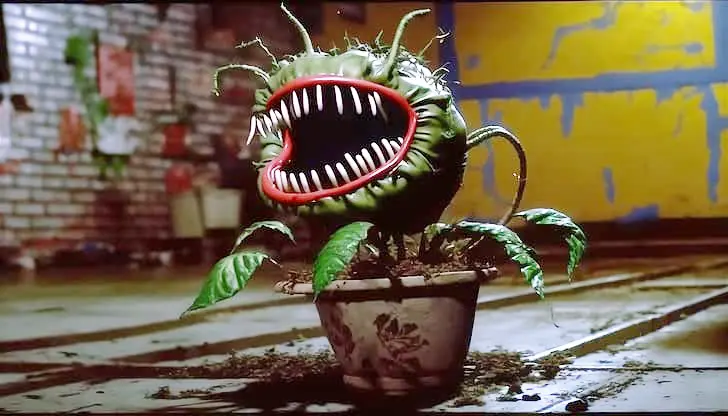
Growing a Venus fly trap offers a window into the intriguing world of carnivorous plants.
With proper care, understanding of its unique needs, and a bit of patience, you can enjoy the beauty and intrigue of this unique plant for years to come.
Encouragement to grow Venus Fly Trap
Whether you’re a novice looking to start your journey or an experienced grower, the Venus flytrap promises a rewarding and educational experience.
Embrace the challenge, and you’ll be rewarded with a thriving, captivating plant that’s a testament to nature’s wonders.










